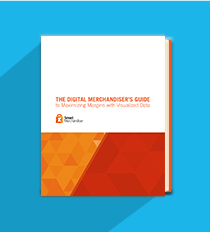
In the classic tale of the Little Red Hen, the protagonist finds herself alone when she seeks assistance in planting and harvesting wheat. Undeterred, she sets about the task herself and refuses fresh bread to the ones who didn’t take the time to help her make it.
In the world of business, good software is essential to success, and on-premise solutions tend to follow the logic and lessons of the Little Red Hen. Namely, that no one should expect a reward when they haven't put in effort, and sometimes, unless you do all the work yourself, you'll never get what you're after.
This is how a lot of people come to the conclusion that buying and maintaining your own software and hardware is the best route to success.
This train of logic may have been true for quite some time, but today’s cloud-based, Software-as-a-Service (SaaS) solutions are proving that long-held belief to be outdated.
After all, why go to all the trouble to plant, harvest, and bake — or develop, test and implement — when there are service vendors who, for a subscription fee, will give you access to the most up-to-date software without the need for downtime related to updates and a costly team of IT pros to facilitate maintenance?
With SaaS models, it’s like having access to fresh bread on-demand without needing to tend every step of the process yourself. For a small subscription fee, you can buy what you need without needing to own every step in the process.
SaaS Versus. On-Premise Solutions
In the SaaS model, software and hardware are owned, deployed, managed and maintained by a provider outside of the business or individuals using it. It's a one-to-many model that exists in the cloud.
On-premise solutions involve software installed directly on hardware where the people and organizations using it do their work. It's a one-to-one model, and it exists in the physical computers on which it's installed.
For the past 10 years, on-prem solutions have been steadily giving way to SaaS as more and more providers offer nimble, cloud-based business solutions across the Internet that seem increasingly flexible in providing ways for people to get work done.
The SaaS Advantage
In many instances, the total cost of ownership (TCO) of SaaS is both perceived to be better over time and actually is better over time when compared to on-prem solutions, which makes sense—with SaaS, companies don't have to keep buying, building and maintaining IT infrastructures.
Utilizing software that's kept in fighting shape on remote hardware that's accessed via the cloud also means the need for an in-house IT department is removed. Instead, the SaaS vendor maintains software and hardware, upgrading it when necessary, and ensuring service level agreements are met, all while keeping software, servers and data secure.
The ability to work anywhere in the world on on any computer (or smartphone or tablet) with access to the Internet is also a major advantage of SaaS over on-prem solutions. It means removing the need for team members to go into a physical office to get work done so that work can finally take place wherever is most convenient for your workforce.
There's much to be admired about the Little Red Hen's work ethic, but with true expertise available for a lower cost and less hassle in SaaS, it may be time for her (and all of us!) to turn our efforts over to cloud-based solutions.
If you’re looking to boost your digital merchandising team’s efforts, be sure to check out the new SaaS version of Smart Merchandiser! Or download The Digital Merchandiser’s Guide to Maximizing Margins with Visualized Data eBook today to learn more!


